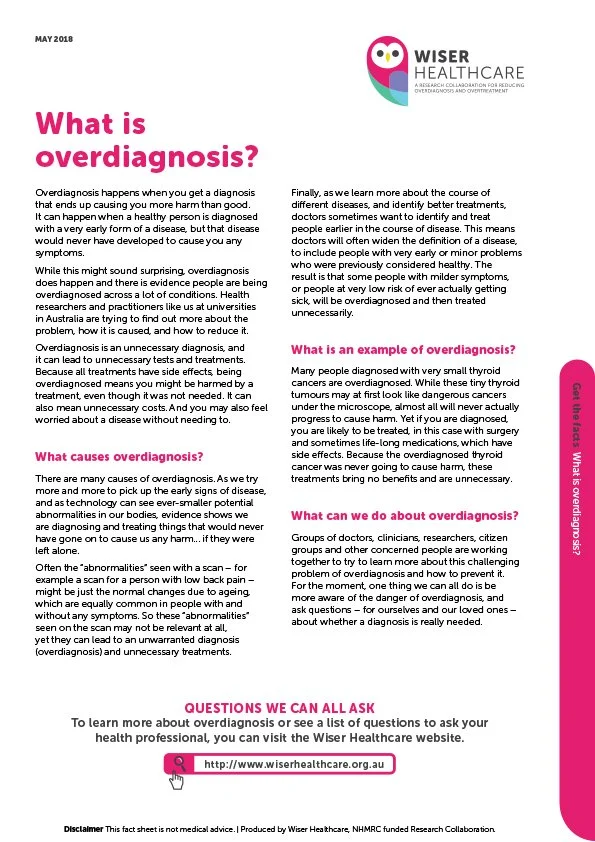What is Overdiagnosis?
Overdiagnosis happens when you get a diagnosis that ends up causing you more harm than good. It can happen when a healthy person is diagnosed with a very early form of a disease, but that disease would never have developed to cause you any symptoms.
While this might sound surprising, overdiagnosis does happen and there is evidence people are being overdiagnosed across a lot of conditions. Health researchers and practitioners like us at universities in Australia are trying to find out more about the problem, how it is caused, and how to reduce it. Overdiagnosis is an unnecessary diagnosis, and it can lead to unnecessary tests and treatments. Because all treatments have side effects, being overdiagnosed means you might be harmed by a treatment, even though it was not needed. It can also mean unnecessary costs. And you may also feel worried about a disease without needing to.
What causes overdiagnosis?
There are many causes of overdiagnosis. As we try more and more to pick up the early signs of disease, and as technology can see ever-smaller potential abnormalities in our bodies, evidence shows we are diagnosing and treating things that would never have gone on to cause us any harm… if they were left alone.
Often the “abnormalities” seen with a scan – for example a scan for a person with low back pain – might be just the normal changes due to ageing, which are equally common in people with and without any symptoms. So these “abnormalities” seen on the scan may not be relevant at all, yet they can lead to an unwarranted diagnosis (overdiagnosis) and unnecessary treatments.
Finally, as we learn more about the course of different diseases, and identify better treatments, doctors sometimes want to identify and treat people earlier in the course of disease. This means doctors will often widen the definition of a disease, to include people with very early or minor problems who were previously considered healthy. The result is that some people with milder symptoms, or people at very low risk of ever actually getting sick, will be overdiagnosed and then treated unnecessarily.
What is an example of overdiagnosis?
Many people diagnosed with very small thyroid cancers are overdiagnosed. While these tiny thyroid tumours may at first look like dangerous cancers under the microscope, almost all will never actually progress to cause harm. Yet if you are diagnosed, you are likely to be treated, in this case with surgery and sometimes life-long medications, which have side effects. Because the overdiagnosed thyroid cancer was never going to cause harm, these treatments bring no benefits and are unnecessary.
What can we do about overdiagnosis?
Groups of doctors, clinicians, researchers, citizen groups and other concerned people are working together to try to learn more about this challenging problem of overdiagnosis and how to prevent it. For the moment, one thing we can all do is be more aware of the danger of overdiagnosis, and ask questions – for ourselves and our loved ones – about whether a diagnosis is really needed.

